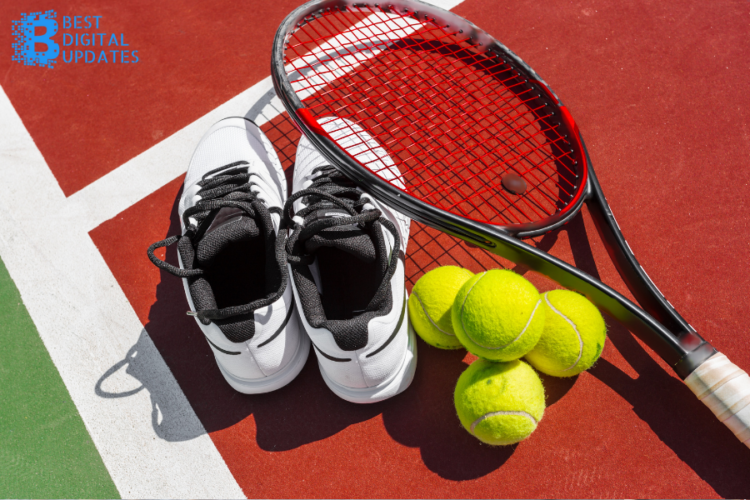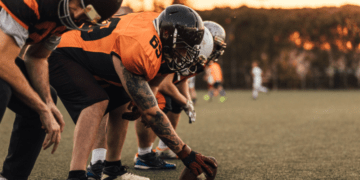If you have never played tennis before, then you might think the only equipment you need is a racquet and a ball. Granted, those are the most important tools to play the game, but if you play regularly, you will need more than the bare minimum.
Here is a quick list of the essential items a tennis player needs to play a good game.
Tennis Racquet
Table of Contents
Generally speaking, there are 3 types of tennis racquets. Small, medium, and large. The larger the head of your racquet, the easier they are to play with, but they give you less overall control. The smaller the racquet, the more control and detail you have, but you’ll need to be a good shot to use them.
The best tennis racquets for beginners are large-headed.
Grips
Grips are the fabric that is wrapped around your tennis racquet. Although your racquet will come with its own grip, it can easily wear down. Purchasing extras will help you keep a firm hold on your equipment when the sweat absorption on the original begins to slip.
Overgrips can be added to your racquet to create extra comfort.
Tennis Shoes
Depending on which type of court you will be playing on, you will need different kinds of tennis shoes. Hard courts require cushioning and extra grip, while soft courts can be flatter allowing you to slide.
Regardless of the court type, you need a shoe with ankle protection and strong toe caps. Strong toe caps will protect your toes against banging the net poles.
Tennis Clothes
Ignoring fashion, most tennis courts have a strict clothing policy. Ideally, you should look at the court’s dress restrictions before arrival. For example, some courts still believe that women should wear a shirt and short skirt. Most recognise that this is a sexualized concept and allow women to wear shorts instead, but others still require women to be on show.
Tennis Balls
Generally speaking, there are 5 types of balls. Standard, Championship, Professional, Pressurised and Non-Pressurised.
Standards are cheap and should only be used for recreational play. Championships are more expensive but hold enough balance to be helpful in practice matches. Professionals are the most expensive and should only be used in tournaments.
Pressurised balls are bouncy, have speed and easy spin. However they will deteriorate quickly, and often don’t last a month. Non-pressurised balls use the rubber material to bounce, they last longer but are heavier making them less accurate.
Headgear
To prevent sweat from getting into your eyes, you need some kind of headwear. This could be a sun visor, a sweat headband, a bandana or anything else you find useful.
To protect your head against the sun, you may also need a cap.
Water Bottle
It doesn’t matter what type of water bottle you use, as long as you take one with you. Hydration is a necessary consideration for any sporting activity, so be sure to take multiple water bottles with you.
Using refillable water bottles will help you save money.
Energy Drinks And Bars
As you exercise you will lose electrolytes. These are the “energy-boosting” chemicals in your body, without them you can feel sluggish. To make sure your head doesn’t spin and you can continue to play, drink energy drinks or eat energy bars to get those electrolytes back.
Towels
You should pack small and lightweight towels in your bag. Having multiple small towels will allow you to swap from one to the other when you get too sweaty, and keeping them lightweight means you can pack them without worry.
Sun Cream
Another way to stop you from dehydrating is to wear sun cream. It will help you retain water, and protect your skin from sun damage. As you sweat, you will wipe away your protection, so make sure to keep the bottle on you. Lastly, you need sunscreen dedicated to activewear, otherwise, your sweat could mix with the lotion causing it to drip and sting your eyes.
Sunglasses
Some places do not allow sunglasses. In that case, wear a visor or a cap to keep the sun out of your eyes.
Ideally, you can use sunglasses as they will protect your eyes from UV light as well, allowing you to be out in the sun and feel protected.
Wrist Bands
If your arms or wrists get sweaty, you should use wrist bands to absorb the water and prevent your hands from losing their grip on the racquet.
Summary
Consider all of these items when you go to the tennis court, but don’t forget the most important of all – your equipment bag. Be sure it has enough room for all of your needs.




















